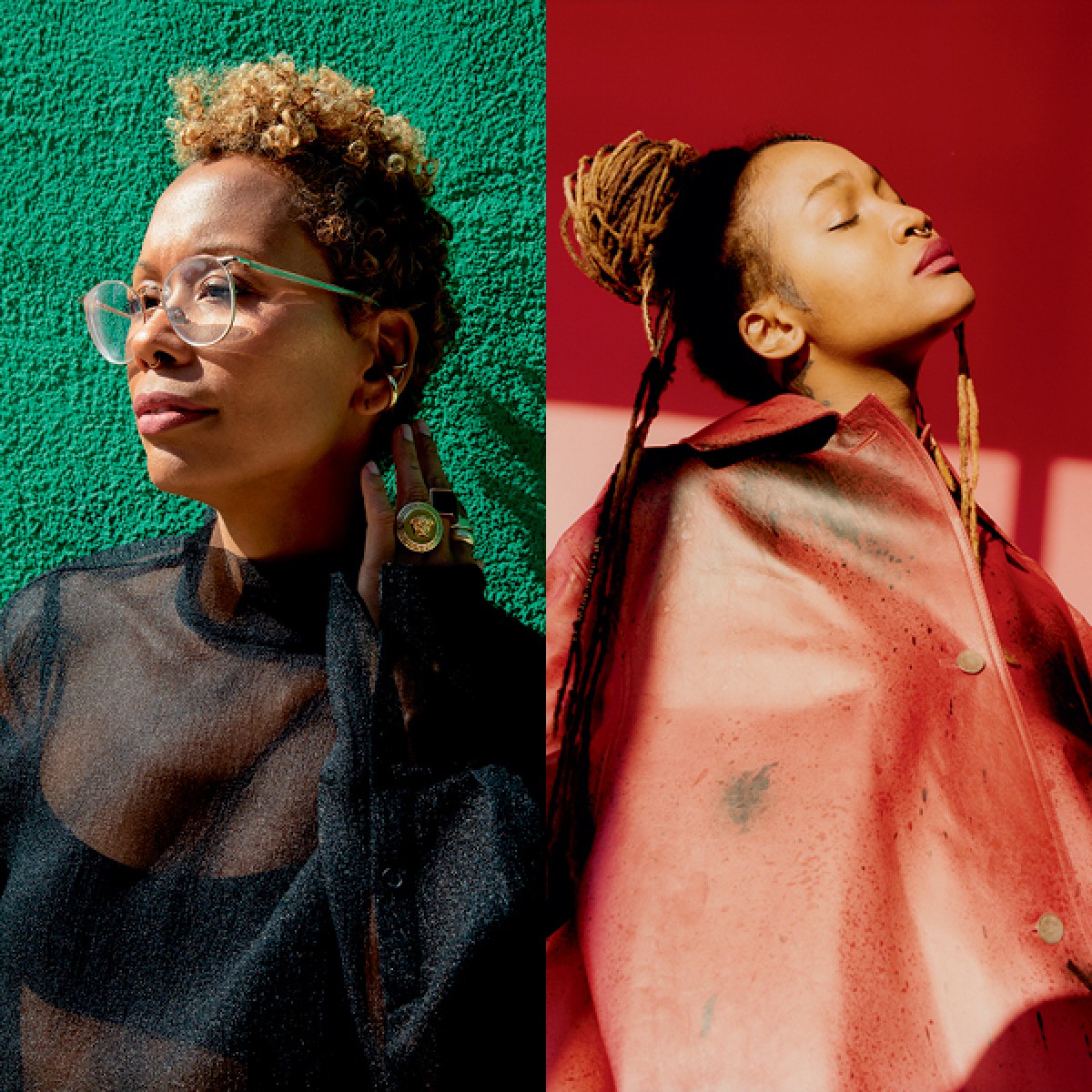Compiling the Black future
The multitalented Kimberly Drew and Jenna Wortham join us for a conversation about their new book, Black Futures. AGOinsider connected with them to find out more.

Photo of Jenna Wortham by Naima Green. Photo of Kimberly Drew by Tyler Mitchell.
What does it mean to be Black and alive right now? That’s the question Kimberly Drew and Jenna Wortham were seeking to answer when they teamed up to compile Black Futures—a powerful collection of images, photos, essays, memes, dialogues, poetry and more, aimed at telling the story of the radical and imaginative world Black creators are bringing forth today. On December 15, you can join Drew and Wortham for a conversation with Madelyne Beckles, AGO Curatorial Assistant, Youth, about the book.
Drew, an author and art curator, and Wortham, a New York Times staff writer, co-host of the podcast Still Processing and wellness expert, have uniquely curated this dense collection of works about the Black experience in a way that gives the reader freedom to explore and participate. In collaboration with Brooklyn-based design studio Morcos Key, they’ve designed Black Futures to allow readers to start on any page and forge their own path of discovery through the collection.
Ahead of the live conversation on December 15, we connected with Kimberly Drew and Jenna Wortham to find out more about Black Futures.
AGOinsider: In the introduction to Black Futures, you note that Black people “have never been more empowered and yet, in many ways, are still so disenfranchised.” In your opinion, what are some of the factors contributing to this paradox?
Drew and Wortham: Quite simply the dual forces of white supremacy and capitalism have set up our cultural landscape such that Black culture is more valued than Black people. Our art, our votes and our contributions to the fabric of so many societies has historically been under recognized and undervalued. In our book, we did our best to set a stage for Black creatives to shine and thrive on our own terms whenever possible.
AGOinsider: There are so many amazing ways the form of Black Futures breaks rules. Whether it be the design work of Morcos Key, or the geometric symbols made by Megan Tatum, the reader is given so much agency. Why was this approach so important for you?
Drew and Wortham: We wanted to create a book that could find a home with any reader — regardless of their life experience. As avid readers and media consumers, we wanted to create a multivalent book that could be immersive and inviting to book collectors and newcomers alike. We sit in deep gratitude to Morcos Key for helping us to realize that vision in the form of a book that is unlike any other.
AGOinsider: Kimberly, in a 2018 NPR interview, while speaking about art and accessibility, you mentioned your passion for “figuring out the math to make art more like music.” What did you mean by that?
Drew: The idea was birthed from an idea put forth by the filmmaker Arthur Jafa, whose 2016 work Love Is the Message, The Message is Death is featured in Black Futures. In conversation with Tina Campt, Jafa explains, “I wanna figure out how to make a Black cinema that has the power, beauty and alienation of Black music.” Black music has been revered, borrowed from, but above all else consumed at a rate that far surpasses that of Black art or Black cinema. How can we create a new paradigm in which people reference an artist like Lauren Halsey or Maty Biayenda in the way that we might reference George Clinton or Sade?
AGOinsider: Jenna, as a sound healer, reiki practitioner and herbalist, what are your thoughts about finding wellness during a year that, especially for Black, Indigenous and people of colour, has been such a daunting and multifaceted struggle?
Wortham: This year has demonstrated the utmost importance of caretaking, of each other and of ourselves. And yet, finding wellness has not been easy — it can feel difficult to accomplish even the simplest daily task, let alone set aside time for lavishing on the self. And yet it’s deeply important. I think a lot about what Resmaa Menakem says in My Grandmother's Hands: Racialized Trauma and the Pathway to Mending Our Hearts and Bodies, which is one of my favourite texts for healing justice. He writes: “There’s a way out of this mess, and it requires each of us to begin with our own body.” What he means is that one of the most powerful tools against state violence and systemic oppression is to love on ourselves, and care for ourselves, and I always encourage people to try and find one small way to work a wellness ritual into their daily lives, whether that be sitting in stillness, buying flowers, making a cup of tea, or my personal favourite: just laying in bed for a few minutes after I wake up, before I grab my phone and head into the day. I love to give thanks for the gift of a new day, no matter what challenges it may hold.
Register today to see Kimberly Drew and Jenna Wortham: Black Futures, live on Zoom, next Tuesday, December 15 at 7 pm.
